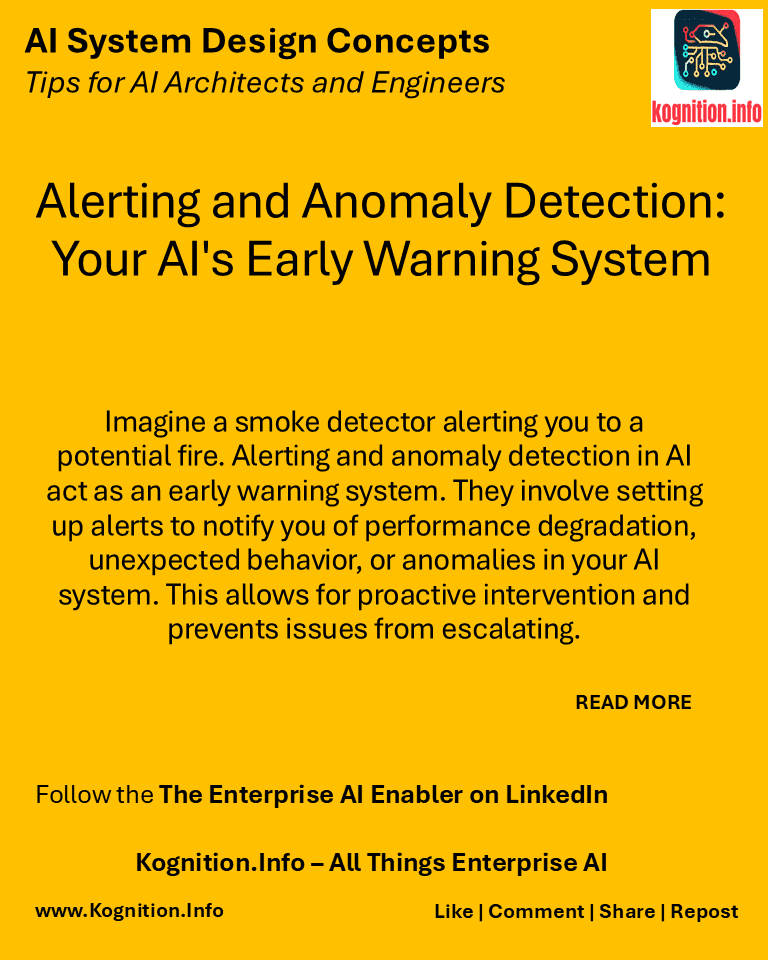
Imagine a smoke detector alerting you to a potential fire. Alerting and anomaly detection in AI act as an early warning system. They involve setting up alerts to notify you of performance degradation, unexpected behavior, or anomalies in your AI system. This allows for proactive intervention and prevents issues from escalating.
Use cases:
- Detecting model drift: Identifying when the model’s performance starts to degrade due to changes in data distribution.
- Spotting unusual behavior: Detecting anomalies in model predictions or input data that may indicate errors or biases.
- Monitoring resource usage: Alerting on unusual spikes in resource consumption that may indicate performance bottlenecks or infrastructure issues.
How?
- Define thresholds and rules: Establish thresholds for key metrics and define rules for triggering alerts.
- Utilize anomaly detection algorithms: Employ algorithms to automatically detect unusual patterns or outliers in data.
- Set up notification channels: Configure alerts to be delivered through email, SMS, or other communication channels.
- Respond to alerts: Establish procedures for investigating and addressing alerts promptly.
Benefits:
- Proactive issue resolution: Address potential problems before they impact users.
- Reduced downtime: Minimize service disruption by responding to issues quickly.
- Improved system reliability: Enhance the stability and reliability of your AI system.
Potential pitfalls:
- False positives: Alerts triggered by normal fluctuations or noise can lead to wasted effort.
- Alert fatigue: Too many alerts can desensitize you to real issues.
- Delayed response: Failure to respond to alerts promptly can negate their benefits.
